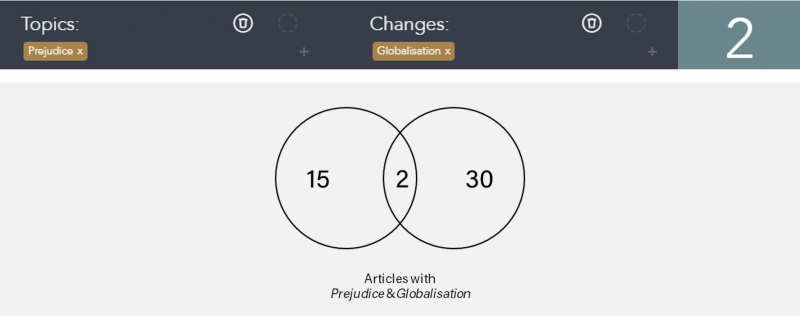This Privacy Policy was last updated on September 4, 2020.
EARS dashboard is an English-language online analysis dashboard, providing up-to-date curated categorization and summary of popular news articles by our international team of analysts, created by the European Academy of Religion and Society ("EARS") and developed and managed by ftrtch b.v.
In order to achieve our mission of providing our religious dashboard, we collect certain personal information from users of the EARS dashboard websites (hereinafter "Users" or "you") for the purposes specifically described and under the conditions laid down in this Privacy Policy.
Providing personal information is optional; however, Users opting not to share such information may not be allowed access to certain features of the EARS dasboard Website. Users are responsible for filling in correct and truthful information, and are thus responsible for any actual or potential economic or legal lawsuit against EARS dashboard, should this occur as a consequence of their wrongdoing or mismanagement of their profile. User accounts are for personal use and may not be used by, assigned, or otherwise transferred to any other person or entity. Users are responsible for the security of their password and will be solely liable for any use or unauthorized use of said password.
Our Users' privacy is of paramount importance to us. We therefore strive to be transparent about how we collect, use and share information about you. We endeavour to provide you with the highest standards of security for any personal information you submit to us.
This Privacy Policy provides details about the information we collect about you when you use our websites and services, or otherwise interact with us, unless a different specific policy is displayed.
1. User Information That We Collect
1.1 EARS dashboard Account Information
In order to provide our services, we collect information about you when you register for an account through the EARS dashboard website, as well as when you update or modify your profile. We keep track of your profile and settings selections within the EARS dashboard.
Specifically, in order to register for an account, you will need to submit the following information:
Email address;
Login credentials.
Further to the above, you can submit additional profile information via "Account". This additional optional information may include:
First and last name;
Country of origin.
1.2 EARS dashboard usage information
We collect information about your activity on our services, for example, the date and time you registered, date and time you logged in, your search queries, digest emails and forms that you have filled in across the website.
1.3 Device and Connection Information
We collect information about the device(s) with which you access the EARS website and services. This device information includes your connection type and settings when you access the EARS dashboard website or use our services. We may also collect information through your device(s) about your operating system, browser type, IP address, URLs of referring/exit pages, device identifiers, and crash data.
1.4 Cookies
EARS dashboard uses cookies and similar technologies to provide functionality and to recognise you across different services and devices. For more information, please see our Cookies Policy, which includes information on what cookies are, how you can control your cookie settings or opt out.
2. How We Use the Information We Collect
We collect and use your information in order to be able to deliver and improve our services. Additionally, we use your information to help keep you safe from fraud.
More specifically, we use the information we collect for the following:
Administering your account and providing our services to you:
We use information about you to provide our services to you, including authenticating you when you log in, providing customer support, and operating and maintaining our services.
Research and development:
We are always looking for ways to make our websites and services better, smarter, more efficient, more secure and more useful to our Users. We use collective learnings about how Users use our websites and services, and feedback provided directly to us, to troubleshoot and identify trends, usage, activity patterns and areas for improvement. We may occasionally conduct research and analysis of Users’ behavior to improve our websites content and services.
Enhance user services:
We will use anonymous statistical information about your activities to provide our users with a relevant experience. An example of this might be a 'top 5 most searched topics' list which is made up of all user searched in the past X days. Please note that we will never share personal information with other users.
Communicating with you about our services:
We use your contact information to send communications via email and within our services, including the Digest email and a newsletter. These communications are aimed at driving engagement and maximizing what you get out of the services and may include information about new features, survey requests, newsletters, and events. We may also communicate with you about new product offers, promotions and contests. You may opt out of these communications by using the “Unsubscribe” option that can be found within the communication itself, or specifically for the Digest using the settings in your account profile.
Safety and security:
We use information about you and your service use to verify accounts and activity, to monitor suspicious or fraudulent activity and to identify violations of the EARS dashboard Terms of Use and other policies.
Ensuring legal compliance:
Where required by law or where we believe it is necessary to protect our legal rights, interests and the interests of others, we use information about you in connection with legal claims, compliance, regulatory requirements and disclosures in connection with the acquisition, merger or sale of a business.
3. Legal bases for processing
To process your information as described above, we rely on the following legal bases:
We need it for you to be able to fully access the EARS dashboard website and services, including operating and protecting the safety and security of the services;
You give us your fully explicit, informed, specific, and unambiguous consent to do so for the specific purposes described in this Privacy Policy;
It satisfies a legitimate interest (which is not overridden by your data protection interests), such as for research and development, to market and promote our services, and to protect our legal rights and interests;
We need to process your data to comply with a legal obligation.
4. Information Storage and Security
We work hard to protect our Users from unauthorized access to, or alteration, disclosure or destruction of, your personal information. Our data hosting service providers are based in the Netherlands.
Access to User data is not available to unauthorized EARS or ftrtch employees. All EARS and ftrtch employees comply with the EARS dasboard employee privacy policy and undertake training on privacy and security.
While we implement safeguards designed to protect our Users' information, no security system is impenetrable and due to the inherent nature of the Internet, we cannot guarantee that data, during transmission through the Internet or while stored on our systems or otherwise in our care, is absolutely safe from intrusion by others.
5. How Long We Keep Information
We retain your EARS dashboard account information for as long as your account is active. You may select to cancel your account at any time. After selecting to cancel your account, we implement a safety retention window of thirty (30) days. During this period, account information will be retained, although the account will, of course, not be visible on our services anymore. We will delete or anonymise your information upon deletion of your account (following the safety retention window) unless:
We must keep it to comply with applicable law;
We must keep it as evidence of our compliance with applicable law (for instance, records of consent to our Terms, Privacy Policy and other similar consents);
There is an outstanding issue, claim or dispute requiring us to keep the relevant information until it is resolved;
The information must be kept for our legitimate business interests, such as fraud prevention and enhancing Users' safety and security. For example, information may need to be kept to prevent a User who was banned for unsafe behavior or security incidents from opening a new account.
6. Your Rights
We want you to be in control of your information, so we have provided you with the following tools:
6.1 Access and update your information
Our websites and services give you the ability to access and update certain personal information. For example, you can access your profile information using the "Account" feature.
6.2 Cancel your account
If you no longer wish to use our services, you can cancel your EARS dashboard account.
6.3 Request that we stop using your information
In some cases, you may ask us to stop accessing, storing, using and otherwise processing your information should you believe that we don't have the appropriate rights or consents to do so. For example, if you believe an EARS dashboard account was created for you without your permission, or you are no longer an active User, you can request that we delete your account as provided in this Privacy Policy.
If you gave us consent to use your information for a limited purpose, you can contact us to withdraw that consent. This will not affect any processing that has already taken place at the time.
You can also opt out of our use of your information for marketing purposes by contacting us, as provided below. When you make such requests, we may need time to investigate and facilitate your request.
6.4 Opt out of communications
You may opt out of receiving promotional communications from us by using the” Unsubscribe” option within applicable emails, using the settings in your account preferences, or by contacting us, as provided below, to have your contact information removed from our email.
7.5 Turn off Cookie Controls
Relevant browser-based cookie controls are described in our Cookie Policy.
8. EARS dashboard Children’s Privacy
The EARS dashboard websites and services are not directed to individuals under the age of 16. We do not knowingly collect personal information from children under the age of 16. If we become aware that an individual under the age of 16 has provided us with personal information, we will take steps to delete such information. If you become aware that a child has provided us with personal information, please contact us as provided below.
9. Changes to our Privacy Policy
EARS dasboard may amend this Privacy Policy from time to time. We will post any Privacy Policy changes on this page with a clear date indication. In case of material changes, we will either provide notice on the EARS dashboard website or we will send you an email notification.
We will also keep prior versions of this Privacy Policy in our archive. These will be available upon request for your review. We encourage you to review our privacy policy whenever you use our services, so that you stay informed about our information practices and the ways you can help protect your privacy.
If you disagree with any of the changes to this Privacy Policy, you may stop using our services and cancel your account at anytime.
10. Contact Us
If you have questions or concerns about how your information is handled, please direct your inquiry to privacy@earsdashboard.com or contact us using the address below:
EARS dashboard
Faculty of Religion and Theology
Vrije Universiteit Amsterdam
De Boelelaan 1105
1081 HV Amsterdam
The Netherlands +31 20 59 85022







